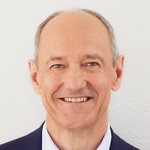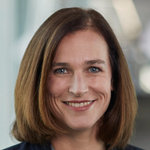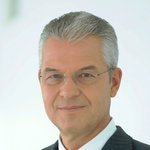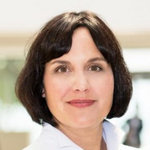
Siemens AG
XETRA:SIE

Siemens AG





In the heart of Europe, Siemens AG has masterfully orchestrated its role on the global stage, evolving from its electrical engineering roots to a diverse powerhouse driving innovation across various sectors. Founded in 1847 by Werner von Siemens in Berlin, this German multinational awoke the industrial world with a prototype of a telegraphic system. Today, it stands as an exemplar of industrial evolution, leading critical domains like automation, digitalization, and electrification. Siemens operates through a robust structure comprising industrial and strategic business units, each feeding into a comprehensive portfolio that caters to industries as varied as healthcare, transportation, and energy. With a keen focus on sustainability, Siemens seamlessly marries digital technology with manufacturing might, positioning itself as a torchbearer for the new age of industry 4.0.
Beneath its operational umbrella, Siemens AG sharpens its competitive edge by nurturing segments like Digital Industries and Smart Infrastructure, which reflect its foundational ethos of leveraging technology to future-proof industry and society. The Digital Industries unit focuses on comprehensive automation solutions and a digital-twin approach, enhancing manufacturing processes through software and hardware integrations. On the infrastructural front, the Smart Infrastructure division develops intelligent solutions ensuring seamless energy transition and smart building innovations. Meanwhile, Siemens Healthineers thrives in the healthcare sector, contributing significantly to the company's financial health with cutting-edge medical devices and services. This mosaic of innovation and strategic diversification allows Siemens AG to generate revenue streams that not only fuel its operational growth but also cement its stance as a staunch custodian of engineering advancements, lighting the path toward a progressive industrial future.
Earnings Calls
In the first quarter of 2023, Audacy reported revenues of $260 million, down 5.7% year-over-year, reflecting ongoing difficulties in the advertising market. Core radio revenues contracted by 9%, but local revenues showed resilience with a 19% increase in local digital. The company anticipates second-quarter revenues will also decline in the mid- to upper single digits due to continued ad market weakness. Cost reductions are expected to save over $35 million, bringing total expenses down approximately 4% in the latter three quarters. Despite challenges, Audacy's leadership remains optimistic about growth opportunities, particularly within digital initiatives and enhanced ad tech capabilities.
Management

Dr. Roland Busch is a prominent figure in the global business and engineering world, particularly known for his leadership role in Siemens AG. Born on March 22, 1965, in Erlangen, Germany, Dr. Busch is a physicist by training, having earned his diploma in physics (Dipl.Phys.) from Friedrich Alexander University in Erlangen-Nuremberg. He furthered his academic career by obtaining a Ph.D. in physics from the same institution. Dr. Busch joined Siemens AG in 1994 and has since built an extensive career within the company, holding various influential positions. Over the years, his roles have ranged from overseeing corporate strategies to managing essential segments of the company's technological and business operations. In 2021, Dr. Busch became the President and CEO of Siemens AG, succeeding Joe Kaeser. His leadership is characterized by a strong focus on digital transformation, decarbonization, and sustainability, aligning with the evolving demands of modern technology and environmental consciousness. Under his guidance, Siemens AG aims to foster innovation and spearhead advancements in areas like energy efficiency, smart infrastructure, and industrial automation. Dr. Roland Busch is recognized for his extensive expertise in physics and engineering and his strategic vision for steering Siemens AG towards future growth and technological leadership.

Dr. Ralf P. Thomas is a prominent figure in the world of business and finance, known for his role at Siemens AG, one of the world's largest industrial manufacturing companies. He currently serves as the Chief Financial Officer (CFO) of Siemens AG, a position he has held for several years. In this capacity, he is responsible for overseeing the company's financial operations, strategic financial planning, and ensuring efficient capital allocation across the organization. Dr. Thomas joined Siemens in 1995 and has since held various key positions within the company. His deep understanding of the company's operations and finances allowed him to ascend through the ranks. Before becoming CFO, he held significant roles such as the CFO for Siemens' Industrial Business sector, where he was instrumental in driving financial performance and supporting strategic initiatives. Educationally, Ralf P. Thomas holds a degree in Business Administration and has also earned a Ph.D. His academic background provides a strong foundation for his expertise in finance and business management, contributing to his successful career. Dr. Thomas is also known for his leadership style, which emphasizes transparency, innovation, and a commitment to aligning financial strategies with overall corporate objectives. Under his financial leadership, Siemens has continued to maintain its status as a global leader in technology and industrial manufacturing, with a steady focus on sustainable growth and shareholder value creation.

Matthias Ernst Rebellius is an accomplished business executive known for his leadership role at Siemens AG, a global technology powerhouse that focuses on industry, infrastructure, transport, and healthcare. He serves as a member of the Managing Board of Siemens AG and is instrumental in driving the company's strategic direction, particularly in the areas of smart infrastructure. Rebellius has a rich career background in the technology and engineering sectors. Before assuming his role on the Managing Board, he held various leadership positions within Siemens, gaining extensive experience in operations, strategy, and international business. His expertise spans across different aspects of the company's operations, contributing significantly to initiatives that enhance Siemens' competitive edge and innovation capabilities. As an executive, Rebellius is recognized for his forward-thinking approach and his commitment to leveraging digitalization and sustainability to meet the evolving demands of global markets. His contributions are crucial in steering Siemens towards achieving its goals in smart infrastructure and digital transformation.

Cedrik Francis Wolfgang Neike is a prominent executive known for his role at Siemens AG, a global powerhouse in electronics and electrical engineering. Born on April 23, 1973, in Germany, Neike has developed a significant reputation in the fields of technology and industry. Cedrik Neike joined Siemens AG in 2017 and has served as a member of the Managing Board. He is particularly known for his leadership in advancing Siemens’ digital industries, focusing on fostering innovation and digital transformation within the company. Neike's oversight includes managing and expanding Siemens' portfolio in industrial automation and digitalization, which are crucial to the company's strategic initiatives. Before joining Siemens, Neike worked at Cisco Systems Inc., where he held several leadership roles, contributing to the company's expansion in the EMEA region. His expertise in network technology and digital business transformation is well recognized. Neike's educational background includes degrees in engineering and business administration, which have supported his successful career in leading technological advancements and strategic operations in large corporations. Throughout his tenure at Siemens, Cedrik Neike has been instrumental in driving forward smart infrastructure solutions and fostering partnerships that align with the company’s vision for digitalizing industry processes, thereby enhancing productivity and sustainability. His work continues to play a significant role in achieving Siemens' long-term goals in innovation and efficiency.

Judith Wiese is a prominent leader at Siemens AG, serving as the Chief People and Sustainability Officer. She joined Siemens in October 2020, bringing with her extensive experience in human resources and organizational development. Wiese plays a crucial role in shaping Siemens' corporate culture, focusing on talent management, diversity, equity, and inclusion, as well as leadership development. Additionally, she oversees sustainability initiatives, helping Siemens to integrate sustainable practices into its operations and strategy. Her leadership is instrumental in driving the company's efforts towards innovation and creating a diverse, equitable workplace that aligns with global sustainability goals. Before joining Siemens, Wiese held significant HR positions at other major organizations, further cementing her reputation as a leading expert in her field.

Veronika Bienert is a notable executive at Siemens AG, primarily recognized for her leadership role as the Chief Executive Officer of Siemens Financial Services (SFS). She has been associated with Siemens for several years, having joined the company in 1997. Over her extensive career, she has held various pivotal roles in finance and risk management within the company, showcasing her expertise and leadership skills. Before taking on the CEO position at Siemens Financial Services, Bienert held the role of CFO at the same division. Her comprehensive financial acumen and strategic insights have been instrumental in steering the division's growth and aligning it with Siemens AG's overall business strategy. Her leadership approach often emphasizes innovation in financial solutions to support Siemens' industrial businesses and promote sustainable projects. Veronika Bienert's contributions extend beyond her financial expertise; she is also known for supporting diversity and inclusion initiatives within the corporate environment, fostering a culture of collaboration and continuous improvement at Siemens. Her career serves as a notable example of progressive leadership within the global financial sector.

Peter Körte is a prominent executive at Siemens AG, a global powerhouse in electronics and electrical engineering. He serves as the Chief Technology and Strategy Officer, a role that places him at the intersection of innovation and strategic planning for the company. His responsibilities involve overseeing the company's technological advancements, digital strategy, and spearheading initiatives that drive sustainable and transformative growth. With a comprehensive background in both technology and business, Peter Körte has been instrumental in aligning Siemens' technological developments with its long-term objectives. His leadership aids Siemens in navigating the challenges of digital transformation and in aligning its core operations with emerging technological trends. Körte's career at Siemens is marked by his expertise in strategy development and implementation, which is complemented by his insights into the evolving technological landscape. His approach combines a deep understanding of Siemens' rich history with a forward-thinking vision aimed at positioning the company at the forefront of innovation in industries ranging from energy and healthcare to infrastructure and automation. In addition to his role at Siemens, Peter Körte often engages in discussions surrounding the future of technology and its impact on society, reflecting his commitment to not only advancing Siemens’ business interests but also contributing positively to broader technological and societal trends.

Eva Scherer is a notable executive within Siemens AG, a global leader in industrial automation, digitalization, and electrification. As of the latest information, she holds a significant position within the company, where she brings a wealth of experience and expertise to the organization's leadership team. Eva Scherer has been instrumental in advancing Siemens' strategic goals, particularly in areas related to innovation, sustainability, and operational excellence. Her leadership is marked by a focus on driving growth and efficiency, alongside fostering a culture of continuous improvement and technological advancement. Throughout her career at Siemens, Eva has taken on various roles that have equipped her with a broad understanding of the industry and the company's operations. She is known for her forward-thinking approach, ability to navigate complex challenges, and her commitment to fostering diversity and inclusion within the workplace. Under her leadership, Siemens has continued to enhance its reputation as a pioneer in sustainable industry solutions, emphasizing its role in the transition towards a more connected and environmentally responsible future. Eva Scherer’s contribution to Siemens AG underscores her status as an influential figure in the business world, championing innovation and sustainable growth.

Dr. Andreas Christian Hoffmann has been a prominent figure in Siemens AG, where he took on the role of General Counsel and served as a pivotal member of the Siemens Managing Board until 2020. Born in 1960 in Landau, Germany, Hoffmann has been recognized for his extensive expertise in legal and compliance matters. Before joining Siemens in 2008, Dr. Hoffmann built a distinguished career in both the corporate world and academia. He worked as a partner in various prestigious law firms and also served in significant roles at companies like Deutsche Telekom. His legal acumen, combined with a strategic business perspective, has played an essential role in guiding Siemens through complex legal landscapes and ensuring compliance across its global operations. Throughout his career, Dr. Hoffmann has been highly regarded for his leadership in fostering a culture of integrity and transparency. Dr. Hoffmann received his PhD in law after studying in Germany and the United States. His time at Siemens was marked by significant contributions to the company's legal strategies and his commitment to enhancing its governance frameworks.

Annette Kraus is the Chief Diversity Officer at Siemens AG. In her role, she focuses on advancing diversity, equity, and inclusion within the organization globally. Kraus is responsible for developing and implementing strategies that promote a diverse workforce, fostering an inclusive company culture, and ensuring equal opportunities for all employees. Her work involves coordinating various programs and initiatives that address diversity in multiple dimensions, such as gender, ethnicity, and socioeconomic background. By driving these efforts, Kraus contributes to the company's commitment to social responsibility and innovation through diverse perspectives and talents.




















































 You don't have any saved screeners yet
You don't have any saved screeners yet

Good morning, and welcome to Audacy's First Quarter 2023 Earnings Release Conference Call. [Operator Instructions] This conference is being recorded.
I would now like to introduce your first speaker for today's call, Mr. Richard Schmaeling, CFO and Executive Vice President. Sir, you may begin.
Thanks, Rob. Welcome to Audacy's first quarter earnings conference call. A replay will be available shortly after the conclusion of today's call at the replay link or number noted in our release.
During this call, the company may make forward-looking statements, which are based upon the company's current expectations and involve risks and uncertainties. The company's actual results could differ materially from those projected in these forward-looking statements. Additional information concerning factors that could cause actual results to differ materially are described in the Risk Factors section of the company's annual report on Form 10-K. As such, risks and uncertainties updated from time to time in the company's SEC filings. We assume no obligation to update any forward-looking statements, except as may be required by law. During this call, we may reference certain non-GAAP financial measures. We refer you to the Investors page of our website at audacyinc.com for reconciliations of such measures and other pro forma financial information.
I'll now turn the call over to David Field, our CEO.
Thank you, Rich. Welcome all to enter to Audacy's first quarter earnings call. Thanks for joining us today. This morning, in addition to sharing our first quarter results and our second quarter outlook, we will share some additional color on our progress as we continue our work to navigate the storm and drive our recovery. This is, of course, a challenging time for our company as we battle through the difficult ad market headwinds impacting companies all across the media landscape. As a reminder, over the past few years, Audacy achieved scale through our acquisition of CBS Radio, roughly tripling our size and establishing a strong differentiated position with our exclusive premium content, leading positions across the country's largest markets and unrivaled leadership in sports and news radio.
In addition, we have been pursuing a broad-based digital and ad tech transformation to capitalize on our scale and establish the company as a true multi-platform audio company through a number of acquisitions, investments and initiatives. As a result, today, we are one of the country's leading podcasters have built an emerging, high-potential innovative audio streaming platform and are working to build competitive ad tech and data capabilities. It is unfortunate, but of course, the unanticipated reality that we have pursued our transformative work in the midst of a global pandemic, sustained supply chain disruption and an extended at recession.
This has obviously placed stress on the company's finances exacerbated by the business' high degree of operating leverage. And yet, notwithstanding the financial challenges, the fundamental inherent value proposition of Audacy and our ability to serve listeners and customers remains intact and distinctive, and we continue to play offense, investing in people, platforms, technology, content, capabilities and growth initiatives to better serve listeners and customers and enable a brighter future.
First quarter results were impacted by the ongoing challenges across the ad market. Revenues declined 5.7%, in line with our forecasted decline of mid-single digits. Core spot radio revenues were down 9%. Local revenues held up considerably stronger than national, including local digital up 19%. Total digital revenues were down 2%. Excluding podcasting, digital revenues were up 3%, led by a strong quarter for our digital marketing solutions business.
Total podcasting revenues were down in the quarter, although podcasting advertising revenues were actually up 14%, excluding the departure of our largest podcast network publishing partner, which moved off of our platform last May. I'm pleased to report that we continue to make solid progress on a number of fronts as our team continues to execute our strategic plans.
During the first quarter, we completed the sale of broadcast towers for $17 million. We also expect to close on our $15.5 million sale of 2 radio stations in either second or third quarter and have a number of other real estate sales working their way forward. We also continue to take additional actions to reduce expenses significantly, but while at the same time, making sure that we continue to drive investment in critical transformational growth initiatives and capabilities, Rich will provide further color on all of this in a few moments.
We also continue to see significant opportunities for reduced expenses over time as we work to reduce our physical space requirements significantly, capitalize on new technologies and reduce our exposure to select sports and podcast content deals that are meaningfully underwater. Turning to our emerging Audacy streaming platform. We are seeing some organic acceleration in our digital platform usage metrics as listeners discover the innovative enhancements we are making to the listening experience. Net monthly listeners on our digital platform grew by 8% year-over-year. Organic app installations growth accelerated to 59%.
Total listening hours to our O&O stations and exclusive content grew by 4% for the quarter, accelerating to 7% in March and 9% in April, led by a surge in TLH to REWIND, our technology enabling on-demand DVR functionality now enhanced with our exclusive chapter content descriptions on the Audacy app. We believe that planned further enhancements to the streaming listening experience through the Audacy app, together with our unique and proprietary content will continue to power our streaming listener growth.
Turning to podcasting. We moved our primary podcasting studios under common leadership last month. placing Genal Wise Berman in charge of our podcast content and partnership efforts, including our C13 and Pineapple Street Studios. The move should enable us to drive significant synergies and enhanced business practices that we expect to yield meaningfully higher future profitability. We operate one of the country's largest and most award-winning podcasting businesses with 44 million listeners.
Last year, we began to shift our strategic focus to more profitable areas of the business, and we are now starting to realize the benefits of that transition. For example, in the first quarter, we grew the number of listeners to our locally produced podcasts, the most profitable part of our business by 26%. We expanded our partnership work with HBO, adding the Last of Us companion podcast, which was number one on the Apple charts along with our succession companion podcast. We also announced new projects with Amy Poehler, the WNBA and Flee of the Red Hot Chilli Peppers. And we continue to lean into our leadership in sports with our 2,400 sports studio, which we launched last year and is experiencing very rapid growth.
I also want to share a couple of thoughts on our developing ad tech. 1.5 years ago, we acquired the audio ad tech business of WideOrbit and rebranded it as AmperWave. Since then, we have been pursuing an aggressive road map to develop our own proprietary tech stack and ad product capabilities.
We recognize that we are playing catch-up with some of our leading peers in the audio space and are working hard and at considerable expense to drive this transformation. Like any company launching emerging tech capacity, there have been some bumps along the way, but it is great to see the progress our tech team is making. We expect to deliver a number of important ad products later this year that should enable us to deliver meaningfully higher levels of streaming audio sales performance, tapping into demand pools and data opportunities that we are currently unable to access. This work does commit a cost, but notwithstanding market challenges, we continue to build capacity across our tech and engineering teams as well as our RevOps team.
Turning to second quarter pacings. As you have heard from others, ad market conditions remain quite challenging. Local has held steady and actually slightly better than Q1, but there has been no improvement in national conditions, which remain quite weak. We are currently pacing down 7% and expect revenues to decline by mid- to high single digits for the quarter. We do note that our comps will get easier as we continue through the year. We are beginning to see some improvement in our largest ad category automotive. After a modestly positive first quarter, second quarter auto pacings are currently up 13%. And we note that a handful of major national and local customers who have been dark since the start of the pandemic have recently placed business with us. To be clear, the auto business remains way behind pre-pandemic levels, but the signs are at least encouraging.
In closing, notwithstanding the market challenges we are enduring, the opportunities to capitalize on our key growth drivers and deliver significantly higher future levels of EBITDA remain intact. We fully recognize that in these uncertain times, it is hard to look beyond current circumstances. But we remain excited about numerous growth opportunities across the company, notably including our various digital businesses, the impact of our enhanced national enterprise sales team and our deepening customer and agency engagement, potentially accelerated audience growth from our streaming audio platform, new pools of ad demand that will be unlocked with the upcoming completion of various ad tech, ad product and data enhancements and planned business model and margin improvements. Furthermore, we note that as economic conditions ultimately normalize, roughly 90% of any future recovery in radio revenues would flow through to EBITDA. We noticed we have before that we can achieve a healthy level of EBITDA recovery at substantially lower levels of radio ad spend than before.
Finally, before turning it over to Rich, I want to acknowledge the outstanding team at Audacy and express my deep appreciation for their excellent work and dedication as we continue to execute our plans and drive our business forward through the current economic challenges.
Rich?
Thanks, David, and good morning. Our total net revenues for the first quarter came in at $260 million, down 5.7% year-over-year. Our core spot revenues were down 9% for the first quarter, and local spot continued to be stronger than national. Our digital revenues came in at $57 million in the first quarter and were down 2% year-over-year as both our streaming and podcast revenues weakened sequentially. Our network advertising revenues were down 6% year-over-year, but strengthened later in the quarter and were up 1% in March. Turning to the outlook for our second quarter revenues. We project that our total revenues will be down mid- to upper single digits for the quarter, and this is in comparison to softer prior year comps.
As you will recall, we and others experienced a slowdown in advertising demand starting at the end of the first quarter last year as inflation ran and the Fed began tightening interest rates. In the first quarter of last year, our revenues were up 14% year-over-year, and our growth rate slipped to up 5% year-over-year in the second quarter.
Moving to our first quarter expense performance. Our cash operating expenses came in at $256 million or up 3% year-over-year, driven largely by an increase in our variable selling expenses tied to our digital marketing solutions product line. The company has continued to work to further reduce its expenses, and we expect that our expenses for the second quarter will be down about 3% year-over-year. And we expect that our expenses over the last 3 quarters of this year will be down by around 4% or by greater than $35 million. Turning to our financial position.
Our compliance basis first lien net leverage was 3.8x at the end of March compared to our maintenance covenant of 4x. And our liquidity was $124 million, down $21 million from year-end. Since the first quarter, advertising demand has further softened and we are concerned that it could get worse before it gets better. The company is continuing to work to accelerate revenue growth, develop and execute added cost reduction actions and to sell other noncore assets.
However, due to the uncertainty of the advertising outlook, these actions may not be sufficient to fully mitigate the impact of potential further advertising weakness. This outlook increases the risk that we may not be able to sustain compliance with our first-lien maintenance covenant over the next 12 months, and this uncertainty led the company to include a disclosure about its ability to continue as a growing concern in the footnotes to its financial statements in our first quarter 10-Q, which will be filed later today. This assessment is not an event of default under any of the company's set agreements. It doesn't impact our day-to-day operations, and it is merely based on our current projections of our future operating results.
Our first-lien maintenance covenant is only for the benefit of our revolving lenders and our relationship banks have historically been willing to amend covenants to provide relief during recessionary periods, but there can be no assurance they would be willing to provide such relief in the future. The company is finalizing its preparation to commence discussions with its lenders to explore refinancing and strategies to manage its liabilities, and we continue to expect to initiate this process before the end of this quarter. As part of this process, we will also seek an amendment of our first-lien maintenance covenant. Beyond these statements, we will not be providing any further details about our plans at this time.
With that, Rob, we'll go to questions.
We will now be conducting a question-and-answer session. [Operator Instructions] Our first question is from Dan Day with B. Riley Securities
So first one for me, I think one of the issues, some of the other media businesses that have experienced stock or bond prices that reflect an elevated probability of the restructuring? Is it maybe some of the advertisers or other important partners or vendors might be hesitant to make longer-term or significant commitments? Just how do you prevent that from happening as you navigate this turnaround?
We see no evidence of that to date, Dan, either on the buy side or sell side. As Rich noted, it's business as usual. We cited our cash position and so forth. And again, we feel right now, we've had no evidence of any meaningful concerns along the lines that you referenced.
Okay. So I look at the CapEx number, you got it down to about $30 million in 2020 and assuming that's effectively bare bones level, just given the situation. Any reason we shouldn't expect CapEx to be down effectively at those levels in 2023.
So there are CapEx investments that have a very strong ROI in a fairly short period of time. And we have a number of projects in flight, particularly in the real estate side of our business that we are swinging hammers as we speak. So I don’t – we don’t expect to build to pay the CapEx back to that same level, Dan. But we’re scrutinizing every dollar for sure and continue to work, as we said, to reduce our costs everywhere practically possible.
Our next question is from Craig Huber with Huber Research Partners.
Can you go through for me if you would. The planned divestitures, what you think that might -- you might get for planned divestitures that would close the rest of the year? And then say again, if you would please, what happened in the first quarter when you closed on the dollar amounts?
So we sold $17 million of towers in the first quarter. David mentioned we have a pending sale for a couple of radio stations, about $15 million that we expect to close on either 2Q or 3Q. And then as we said last time, we think that our sales rest of year, that will be another $10 million. So $25 million plus, and we're working on more now. And hopefully, next time we speak, we'll have more to report, but we're working on building the pipeline.
When you say more to report, do you think it'd be overly significant, some of the stuff you could put on the market?
I don't know at this point. There's a number of conversations we're in the midst of. But in order of magnitude, could it be another $20 million short in that ballpark, but not $50 million or $100 million.
Okay. That's helpful. Can you just -- because of the wide disparity between the national spot performance versus local. Can you just break that out for me, just quantify in the first quarter, how you just trending or did and maybe talk about the trends for the current quarter? -- if you can quantify it appreciate it...
Yes. So the spread was -- for us, local was down about 5% year-over-year that national was down in the mid to upper teens.
And just to dovetail off of Rich's comment, he's referring to radio. And as I noted, our local digital performance actually was up in the high teens.
Okay. And then would you say the second quarter trends for local and national? How would you break that out? How it's pacing so far in...
We haven't broken it out, Craig, but we -- but it has softened somewhat versus the first quarter sequentially.
Although I think as I mentioned in my comments, local is essentially the same. We've seen a little more weakness on the nationals.
So national has gotten a little bit worse in the second quarter, but not so much local, -- is that what you're saying?
I think it's important to note, Craig, and said this in our comments that last year, the first quarter was fairly strong. We were up 14% year-over-year, and that rate of growth fell back to just 5%. So it backed up by 9 points from 1Q to 2Q. So we're up against softer comps in 2Q and vulgaris as look similar to what they look like in the first quarter year-over-year.
Okay. And then my last question is kind of a point here. About the cost, I mean I feel really bad in the position of your company is facing out given the environment. I'm not trying to be terabit here at all, but you know these numbers a lot better than I do, Rich, but I mean your adjusted EBITDA of $2 million in the first quarter versus $25 million a year ago. You have some CapEx have to net against that, $32 million of interest expense. I mean, to be honest with you, why are costs not down a lot more here? I mean I know you're trying to preserve the company for the long term. I'm worried you're not going to get to the medium term, let alone the long term, why are costs not down, honestly, like 10% right now. I mean what...
Yes. So Craig. No, I understand, Craig. Look, the first quarter, we had given guidance that we thought our cost would be flat to down slightly for the full year. But we're now updated that guidance in our costs over the last 3 quarters of the year, but we expect to be down by around 4% or by over $35 million.
So the company is continuing to work to reduce its costs. But I think you need to recognize that if you have as a mental model, what the company did in 2020 and think about how things are different in 2023, they're quite different. In 2020, growing the outset of the great at the pandemic, for example, pretty much every major sports we was disruptive and we were able to reduce our sports rights fees quite significantly because lots of games were canceled. Back when we took some actions from in terms of deferral of salary increases deferral of compensation and rollbacks. We did some things that were in the context of the moment, palatable.
And of course, the employment environment today is quite different than it's -- we are fiercely competing for talent as our other companies. So there's a lot of things that are different today than what they were in 2020. And the companies -- I look at it, Craig, our costs this year will be down versus 2019. So look back to 2019 that 3 years ago and 4 years ago. Then they'll be down by greater than $60 million versus 2019. And a lot's happening between in terms of inflation, et cetera. So I hear you.
I understand what you're saying. I wish I had a magic wand. We are doing everything that we think is practical and prudent to mitigate the persistent advertising weakness that we have experienced. We have seen at the outset of this call that happy anniversary. It's been a year since the advertising environment turned down at the outset of the Fed's rate type in cycle. And this has persisted for a year and no signs of it abating yet. But that will come, of course, but I think we have likely a few difficult quarters ahead of us. So I hear you, Craig, we doing everything we think is appropriate than practical and that's what we're at.
Look, I feel bad for the position you guys and I'm not being dragged to that. Obviously, the revenues you guys know, were down $300 million from 2019. So take out $60 million might have been a herculean effort relative to where your interest expense is now in the rising rate environment, your between a rock and a hard place here. I'm just editorializing here because I just worry long term you guys aren't going to get to long term if you don't take out a 5%, 10% plus on the cost like today rather than -- that's just my own personal thought on watching this from the outside.
There are no further questions at this time. I'd like to turn the floor back over to David Field for closing comments.
Great. Well, thanks again, Rob, and thanks, everybody, for joining us here this morning, and we look forward to our next report. Thanks so much. Bye.
This concludes today's teleconference. You may disconnect your lines at this time, and we thank you for your participation.